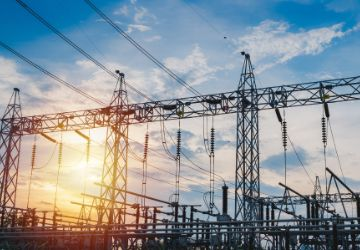Revolutionizing Grid Infrastructure: Opportunities and Challenges in the UK for 2024
- February 22, 2024

As we enter 2024, the United Kingdom stands at a crucial moment in reshaping its energy landscape. The demand for sustainable and resilient energy sources is more urgent than ever, and a key aspect of this transformation is the revolutionization of the grid infrastructure. This blog will delve into the opportunities and challenges that the UK faces as it strives for a more efficient, sustainable, and technologically advanced grid infrastructure.
Integration of Renewable Energy
The UK has made significant progress in utilizing renewable energy sources, particularly wind and solar power. Overhauling the grid infrastructure provides an opportunity to seamlessly incorporate these intermittent energy sources. Smart grids and energy storage solutions can play a pivotal role in managing fluctuations and ensuring a stable energy supply.
Decentralized Energy Systems
Shifting towards decentralized energy systems offers greater flexibility and resilience. Localized energy generation, combined with smart grid technologies, empowers communities to generate, store, and manage their own energy. This not only reduces reliance on centralized power plants but also enhances the overall reliability of the grid.
Digitalization and IoT Integration
The infusion of digital technologies and the Internet of Things (IoT) into the grid infrastructure can lead to more efficient monitoring, management, and control of energy flows. Smart meters, sensors, and advanced analytics enable utilities to optimize energy distribution, identify inefficiencies, and respond to demand fluctuations in real-time.
Electrification of Transport
The increasing adoption of electric vehicles presents an opportunity to reshape the energy landscape. A well-designed grid infrastructure can support the widespread deployment of electric vehicle charging stations, fostering a cleaner and more sustainable transportation system. This, in turn, contributes to reducing carbon emissions and promoting environmental sustainability.
Challenges
Investment and Funding
Securing the necessary investment and funding is a primary challenge in revolutionizing the grid infrastructure. The transition to advanced technologies and renewable energy integration demands significant capital, necessitating aligned financial incentives for both public and private stakeholders.
Regulatory Framework
The existing regulatory framework may not be well-suited to accommodate rapid technological advancements and the evolving energy landscape. A comprehensive review and adaptation of regulations are essential to create an environment that encourages innovation, facilitates market competition, and ensures fair and sustainable practices.
Cybersecurity Concerns
As the grid becomes more interconnected and reliant on digital technologies, the risk of cyber threats increases. Protecting the grid infrastructure from cyber attacks is crucial to ensure the integrity and reliability of the energy supply. Robust cybersecurity measures and protocols must be implemented to safeguard against potential vulnerabilities.
Public Awareness and Acceptance
Successfully implementing a revolutionized grid infrastructure requires public support and awareness. Educating the public about the benefits of a modernized grid, addressing concerns related to new technologies, and fostering a sense of collective responsibility for sustainable energy practices are crucial aspects of overcoming this challenge.
The year 2024 represents a pivotal moment for the United Kingdom in its pursuit of a sustainable and technologically advanced grid infrastructure. While there are numerous opportunities to harness renewable energy, promote decentralization, and embrace digitalization, addressing challenges related to funding, regulation, cybersecurity, and public awareness is equally vital. With a strategic and collaborative approach involving government, industry stakeholders, and the public, the UK can lead the way in revolutionizing its grid infrastructure, paving the path towards a cleaner and more resilient energy future.


